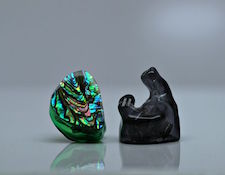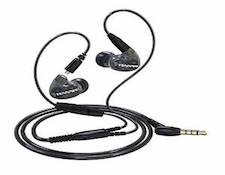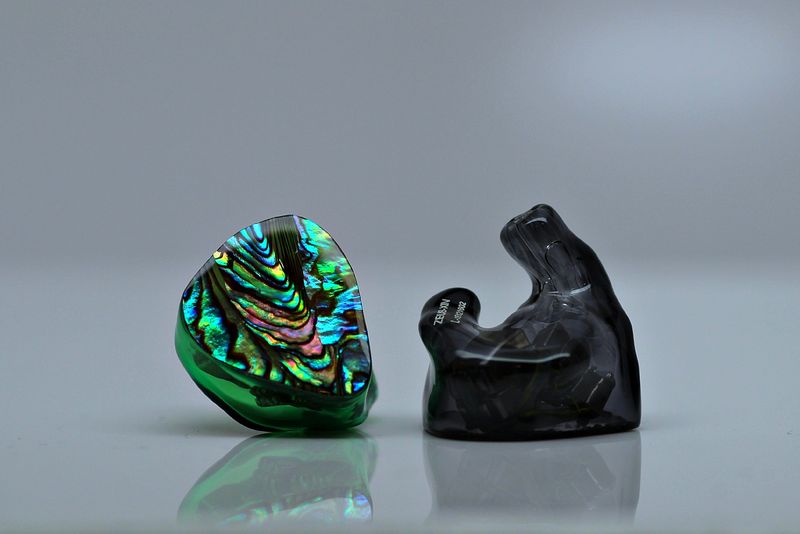It’s the time of year for saving money!
Recently I’ve been spending a lot of time listening through earphones. The reason is because I have two in-ear reviews due in a couple of weeks. One pair of headphones is a custom in-ear model that costs around $2000 while the other is a universal in-ear priced at $500. I’ve also been doing some listening through a pair of $28 universal in-ears as sort of a “control.”
 It will probably come as no surprise that the $2000 CIEM is the best sounding of the three pairs. It has greater dynamic contrast, superior image focus, tighter bass, more extended bass, higher efficiency, and a superb custom fit. The $500 universal in-ears perform at almost as high a level as the $2000 CIEM, lacking a bit of the CIEM’s dynamic verve, focus specificity, image size, and low bass extension. But the big surprise for me was how well the $28 pair of Tennmark Pro in-ears sounded in comparison to these two far more expensive earphones. Not only does the Tennmark sound more than decent, it also has a removable cable with built-in smartphone control. The fit, using a double-flanged tip that I had in my tips collection was on par with the $500 UIEM. Even with the supplied silicone tips the fit was Ok, but with the double flange tips the Pros stayed in my ears better with less periodic adjustment needed.
It will probably come as no surprise that the $2000 CIEM is the best sounding of the three pairs. It has greater dynamic contrast, superior image focus, tighter bass, more extended bass, higher efficiency, and a superb custom fit. The $500 universal in-ears perform at almost as high a level as the $2000 CIEM, lacking a bit of the CIEM’s dynamic verve, focus specificity, image size, and low bass extension. But the big surprise for me was how well the $28 pair of Tennmark Pro in-ears sounded in comparison to these two far more expensive earphones. Not only does the Tennmark sound more than decent, it also has a removable cable with built-in smartphone control. The fit, using a double-flanged tip that I had in my tips collection was on par with the $500 UIEM. Even with the supplied silicone tips the fit was Ok, but with the double flange tips the Pros stayed in my ears better with less periodic adjustment needed.
 The big downside of the Tennmark Pros? They are a mass-produced product originally and primarily created for Tennmark’s domestic market, which is, as if you haven’t guessed already, China. Although China’s middle class may not yet be as well healed as the US and European counterparts, they do want and need in-ear monitors that they can afford – hence companies that may not have much visibility yet outside of China have been supplying China’s audio market with decent entry-level earphones for years.
The big downside of the Tennmark Pros? They are a mass-produced product originally and primarily created for Tennmark’s domestic market, which is, as if you haven’t guessed already, China. Although China’s middle class may not yet be as well healed as the US and European counterparts, they do want and need in-ear monitors that they can afford – hence companies that may not have much visibility yet outside of China have been supplying China’s audio market with decent entry-level earphones for years.
For some audiophiles the thought of buying a Chinese-made audio product is an anathema. But nowadays with all but a few rare exceptions, the vast majority of entry-level audio products are made in China, or Vietnam, or Indonesia. And despite what any politician from any party may spout, those kind of factories and factory jobs are not going to revert back to the US and Europe. The plain fact is that if you must have products sourced from the US or Europe they will, for the same level of finish and features, cost more than Asian-made products. And in the case of entry-level priced audio gear there are often simply no lower-priced offerings from firms without Asian manufacturing capabilities.
Of course the issue of “diminishing returns” emerges when you compare the performance of the Tennmark Pros with the $2000 CIEMs. Yes, the $28 Tennmarks are a better sonic value, but that is only part of the value proposition. The $2000 CIEMs are custom-made in the US by skilled artisans, require a specialized and high level of support service and QC, come with an extended warranty, and push the performance limits of in-ear technology to its bleeding edge. In comparison the Tennmark have no domestic support and are a mass-produced commodity item designed for merely “acceptable” performance and a much shorter service life.
 Yes, I could trot out the old Miata Versus Ferrari comparison, but perhaps a better metaphor would be to compare a Hostess cream-filled cupcake with a Sacher Torte from the best bakery in Paris or Salzburg. The Hostess isn’t bad (I still like them), but it does not require the time, effort, ingredients, or “manufacturing expertise” of the torte.
Yes, I could trot out the old Miata Versus Ferrari comparison, but perhaps a better metaphor would be to compare a Hostess cream-filled cupcake with a Sacher Torte from the best bakery in Paris or Salzburg. The Hostess isn’t bad (I still like them), but it does not require the time, effort, ingredients, or “manufacturing expertise” of the torte.
Personally, I find there’s a time and place for both $28 and $2000 in-ears. After losing a pair of Shure SE-530 on a trip once, I like to travel with less expensive earphones so that if they get lost in the shuffle it won’t ruin the trip. Conversely, when I’m making an on-location recording I carry multiple pairs of high-performance custom in-ear monitors.
I would never try to dissuade any audiophile from buying any pair of earphones (Ok, I would recommend consumers trying more than just one pair of Beats or Bose) I am encouraged to discover that even if you are on an extremely tight budget you can find earphones that perform on a high enough level to allow music to emerge relatively unscathed. Combine them with an entry-level player such as the FIIO M3 or the AGPtEk player and for less than $100 you can have a complete and more than decent sounding portable music system. And that is something that certainly did not exist when I contemplated buying my first stereo…








